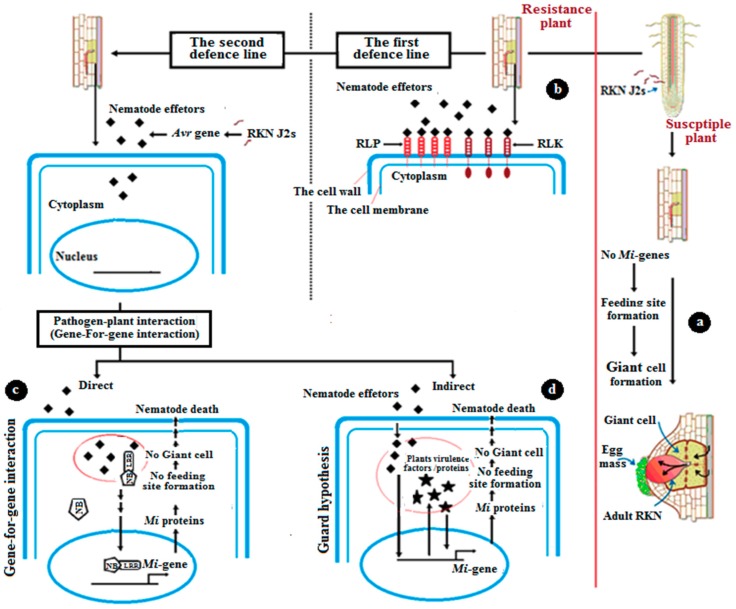Figure 2.
The mechanism of natural resistance against the root-knot nematode (RKN). (a) In susceptible plants, where there are no Mi-genes, the nematode completes its life cycle in the root by forming giant feeding cells. (b) In the resistance case, the plant undergoes the first defense line against RKN penetration by the interaction between extracellular receptor proteins, receptor-like kinases (RLK), receptor-like protein (RLP), and nematode effectors. (c) The plant then begins the second defense line, which includes direct gene-for-gene interaction. This theory depends on direct interaction between the receptor protein of tomatoes and nematode effectors, producing Mi-proteins, which prevent the nematode from feeding. No giant cell formation is observed. (d) The other second defense line is an indirect pathway, which is referred to as the guard hypothesis. In these cases, the virulence factor of the nematode (Avr genes) interacts with tomato accessory protein.

